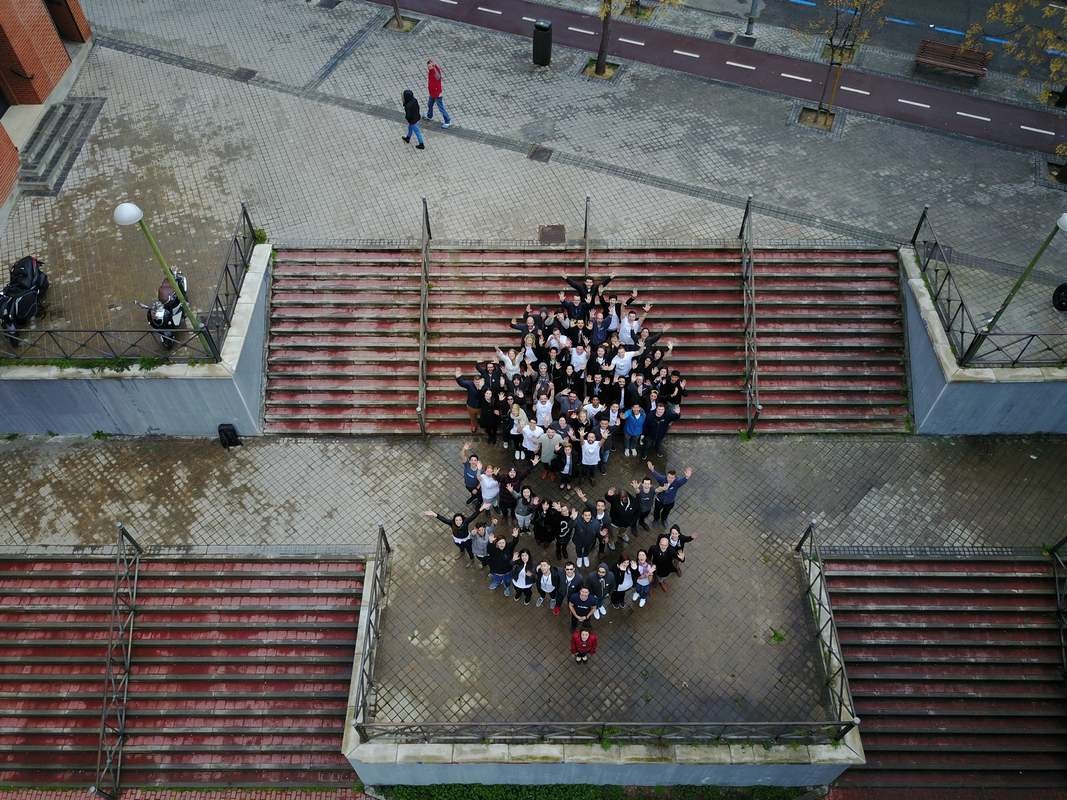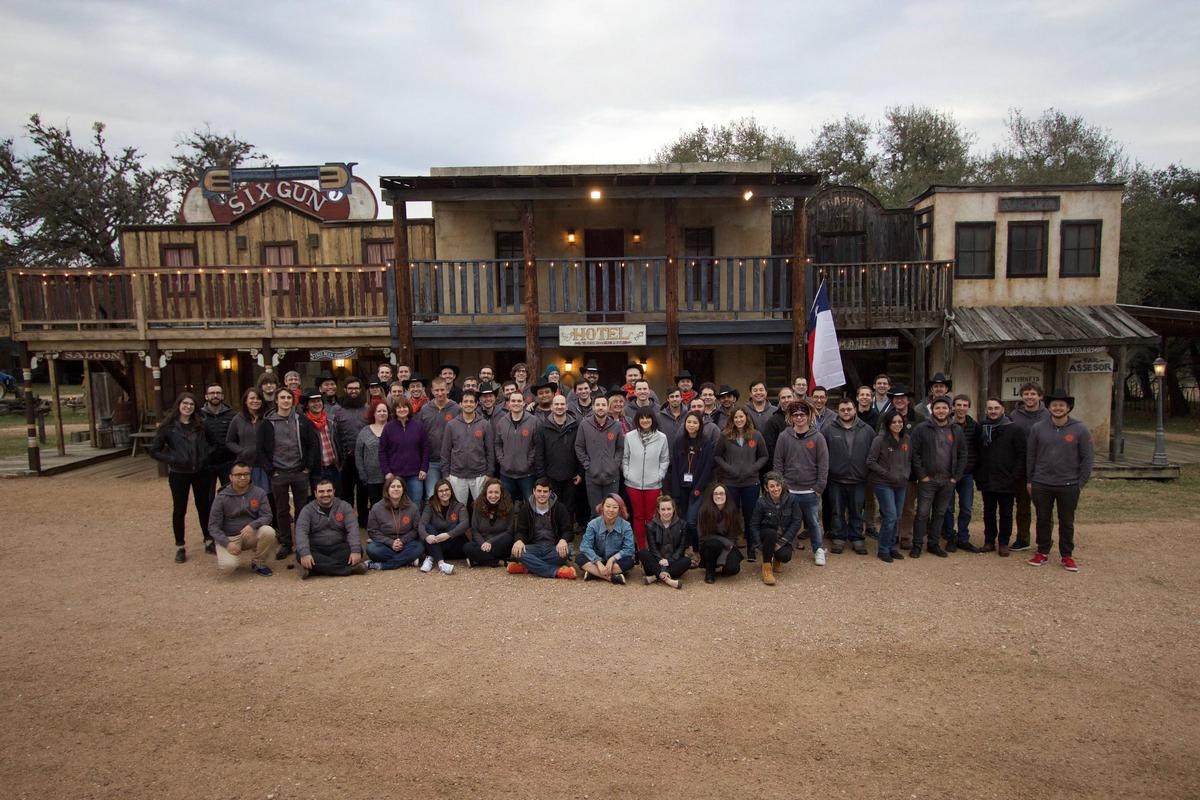05What does team culture mean?
Jason Fried and David Heinemeier Hansson who wrote Remote say:
“You don’t need everyone physically together to create a strong culture. The best cultures derive from actions people actually take.“
Which goes perfectly with Buffer’s explanation of how team culture shows itself:

Toggl Plan also has a great understanding of what team culture is:

So, in the case of an effective team culture, team members understand where the work of their team fits in the total context of their organization's strategic plan and shared goals, and they’re able and willing to discuss and adjust their work behavior and mindset to make sure everyone in the team feels comfortable and confident to work towards these common goals.
Creating a good team culture consists of many different parts to keep in mind and actively work on, such as:
Hiring the right team members: we talked earlier about why it’s important to not “settle” when hiring new people to join your company. If you spend as much time as possible on making absolutely sure that you hire only the best people for your team, you’ll be making the process of natural team culture forming a lot easier.
Creating rituals and traditions: families and close groups of friends tend to have certain activities, processes or things that they repeat—traditions. Creating these traditions with your team members, regardless of how often it happens, helps keep the team cohesive and encourage open communication and trust. However, if it’s not working, you should also be able to let it go:
Creating a sense of accountability: in an effective team culture, team members understand where their individual work fits in the overall context of their organization's strategic plan. This means creating a lot of personal accountability and highlighting the connections and dependencies between team members’ work.
Creating an open environment: in order to have discussions about your team culture, you’ll need to have cultivated an open and judgement-free environment where your employees aren’t scared to express their opinions (in a respectful manner, mind you).
Giving everyone a voice and making sure everyone feels comfortable to share their opinions and ideas means there will be a lot more different viewpoints and opinions to take into account. Again—keep in mind the “many eyes” theory.
Discussing, adjusting and improving: once you’ve created that open environment, you should regularly address the topic of your team culture with everyone present (whether virtually or in person), so you can look over and discuss how you work as a team, what your values are, what your expectations and fears are, and what you need to do individually to succeed as a cohesive unit.

Putting it in writing: for easy access if someone wants to comment, edit or add, a useful resource for new employees, and a general reference point for any discussions—external or internal—about your team culture.
Effective and open communication is absolutely crucial in a remote team. Without it, everything falls apart.
The topic of communication in a remote team isn’t something that is up to just the CEO or any other single person to decide on. The CEO is responsible for driving the process and initiating conversations, but in general, it’s something that needs to be discussed with the entire team—regularly.

Collaboration, transparency and adaptiveness are a part of effective communication in itself, and regularly addressing these challenges and solutions makes sure that everyone is in the loop and has a say about how and why they want to communicate with each other.
Besides having discussions, it’s also important to have all of it down in writing. The best way to do this is simply to create a document on the topic in an accessible place to have it on hand for everyone to access and edit/comment on at any time.
Also, if you have regular team meet ups or retreats, make sure the culture and communication talk is a definite, scheduled part of your discussions during the limited time you’re all in the same room.
Some discussion points to add in your talks and/or discussion document can include:
- Which channels you use for communication (Fleep, Slack, email, etc);
- Which channels you use for collaboration (Google Docs, virtual whiteboards, design and development programs);
- How you communicate your availability to the team (available hours, when you’ll be off or unreachable);
- Your tone of voice (for example, agree that disagreements and heated discussions are fine, but only in a respective and reasonable voice, etc);
- Choosing your words (ruling out any slurs, offensive language, etc);
- Communication when it comes to processes (which team members should definitely be included in which discussions and dependency chains—so, for example, to make sure that a copywriter doesn’t get left out from the process of preparing a new product for launch).
When you have these discussions in person, for example during a retreat, make sure to still write them down as you go—ideally right as the discussion is happening.
This will serve as a nice reminder to everyone about what you talked about in person, and also as a good source to share to new team members, or even to use as a reference when giving interviews or talking publicly about improving transparency.
Engagement with the company and coworkers alike mostly stems from trust and open, judgement-free communication. There are several ways to make sure that your team members are engaged, involved, motivated and in the loop of everything that is going on, whether it involves them personally or not.
This means regular meetings—but how often and when? There are several options for setting up your meeting schedule, and depends entirely on your team and the workflow you have. Here are some possible scenarios:
- No scheduled meetings/meetings on demand
- Longer scheduled meeting once a week/month/quarter
- Daily shorter meetings (standups)
Besides figuring out which schedule fits your team best, it’s also important to think about the structure of them. Since remote team members can’t spend time with each other by the watercooler or go out for a drink together after work, it’s good to keep a healthy balance between spending time on strictly work related topics and just chatting about life and celebrating little wins.
Whatever you decide when it comes to your meeting schedule, keep it real, though—too many useless meetings can mean a lot of wasted time that could be used for individual work.
Besides having meetings that involve all or most of the team, it’s also important to make a conscious effort to check in with your team members—covering topics both related to work and personal life.
This is why it’s important, according to Alex Turnbull from Groove:

When an employee says that something is really bothering them, they’ve probably been thinking about it for a while. But when negative feedback comes off-hand that something new that we’re doing or some new trend isn’t exciting to them, there’s a good chance that if the issue isn’t addressed, it’ll eventually turn into something that’s really bothering them.
A good company doesn’t have unreachable communication barriers between employees in any directions, regardless of how different positions they’re in. This is especially important with remote teams.
Nobody likes being kept in the dark, and especially when your team members are scattered around the world, it’s important to keep them in the loop about how the company is doing, what is happening business wise, and making sure everyone is aware of any big decisions that will potentially change the way the company—or its employees—work.
Being kept in the loop means that employees feel more important, connected and informed. For example, if you have one big weekly call, the CEO can take 5 minutes to notify team members about how the company is doing and what’s up business wise, and then allow employees to ask any questions they feel like.
In addition to transparency from top to bottom, there also needs to be full transparency when it comes to horizontal processes in the company. This means attention to the work process, dependencies and collaboration—clarity about who does what, why and how, and how different roles and workflows are connected.

Aside from the teambuilding that happens during the onboarding of new employees, it’s great to have that flow going in everyday work, too.
This is super important. In a “normal” office environment, the “watercooler” is where all the unofficial, off-topic, unrelated chatter happens. In some places it’s seen as a waste of time, but it’s actually an integral part of employees bonding outside work and creating trust between each other.

Most remote teams we know use various chat apps for their internal communication—whether it’s Slack, Fleep, or anything else. The simplest way to create a place for fun stuff, venting, or just taking a break, is creating a watercooler chat, and actively encouraging fun, off-topic conversations and sharing stuff that doesn’t fit in more “official” product and company conversations in it.
Besides having regular one on ones between the CEO or another management position and team members, it’s also good to have some time with the entire team to talk about whatever comes to mind—basically a little time slot for a virtual watercooler chat during a call.
Groove, for example, has daily standups that are not allowed to go over 10 minutes, except for Mondays, when some time is spent on chatting about everyone’s weekends, personal news or accomplishments, and generally spending some quality time together—online.
Toggl Plan also has designated culture time in their calls:

This is another way of encouraging personal relationships and helps the team members get to know each other more and gradually build trust.
It’s important to make sure that everyone in the team forms at least some level of personal relationship as well as a working one. Especially in a small team where everyone works closely together, having a connection makes it much easier to work together effectively.
When a new team member is introduced to the team, encourage everyone to reach out and put away some time to have a 1:1 call or chat with the new team member. It’s important to push team members to do this themselves, since new hires can be a bit shy and cautious at first (this isn’t a rule, but it might be the case).
Even with a team that has already worked together for a while, it’s still important to make sure that everyone bonds. Out of natural group-forming habits, people tend to mostly talk (both in and out of work time) to people closest to what they are doing in the team—so, marketing people hang out with other marketing people, business development with other bizdev people, designers between themselves, etc), and hardly ever chat with other “departments”, unless it’s regarding something work-related.
However, it’s important for the whole team to be cohesive on a personal level as well, especially if it’s a smaller group of people who have to have a good personal match to work together efficiently. This should never be achieved with unnatural means, such as forcefully scheduling one on one time between employees, but rather encouraging people to reach out to their team members on their own.
DuckDuckGo, for example, uses a weekly thread of questions and answers to help team members get acquainted:

This is where regular virtual team time as well as retreats come in handy—if you structure them in a way where every employee has a chance to share things about themselves in an open environment, employees can start making connections between themselves, realize what they have in common (and what they don’t) and learn about each other’s interests. This gives them a good foundation to start a conversation with team members.
FlexJobs, for example, found some common ground and a new team activity through a random conversation:
“Listen to people’s interests and activities and try to build some programs around those. For example, a few years ago I was talking to a writer we work with and she mentioned that she had recently become a certified yoga instructor. Through prior conversations with people, I knew there were a fair number of yoga enthusiasts on our team. After some big idea thinking, we started offering a virtual yoga class!”
Working most of the time without seeing or even ever meeting your team members is possible, however, meeting in person and actually hanging out creates a whole new layer of personal interaction—and therefore, trust—that is then much easier to maintain later on when communicating virtually again.
Buffer has also explained the powerful “magic” that happens when you get to actually hang out with your teammates in person:

Zapier actually goes as far as organizing a “retreat” for every new employee to get them comfortable from the get go:

Besides simply getting to know each other better and building more trust between team members (which would be reason enough already), you get to also:
- Discover new and fun locations in the world;
- Have more personal discussions about your team culture and core values;
- Improve teamwork skills.
Team retreats can be costly and there’s a lot of logistics and organization involved, but it’s totally, totally worth it, and will massively benefit your team culture.
Organizing a retreat can be a bit overwhelming, especially if you have a bigger team. Here are some things to keep on mind:
Budgeting: make sure you look at how much it would cost you to fly your team members to a certain location, plus covering accommodation, food, activities etc. It can be a lot more expensive than you think. Buffer, for example, spent 111,874 on their team retreats in 2015, and explained why, too.
Voting for the next locations: to make sure everyone has a say in the matter, have team members offer ideas for where they want to go and what they want to do—and then vote on it.
A document for activities during the retreat: open a schedule doc way before the retreat even starts, so people can schedule in meetings/chats/activities that they want to get done during the retreat.
Schedule in individual downtime: it’s understandable that you want to get the absolute most out of your time spent together, but make sure you take some free time during which people can spend some time on their own, too. Not everyone enjoys spending 24/7 around other people, even if it is for a week or two.
There are also other options besides having one huge and expensive retreat once a year. Zapier has their retreat schedule figured out to a T:

However many retreats or get-togethers you decide to organize for your team, make sure you do it at least once a year. Remember—good relationships can be built in person, and then managed online later on—so, it’s important to get your team together as soon as possible. Outsite is a great place to start organizing your trip or join an already booked retreat.
Continue reading
- 01 Why go remote - the pros and cons of becoming part of a distributed team.
- 02 Building distributed teams: everything you need to know
- 03 Hiring remote talent: How to set up a successful remote hiring pipeline
- 04 Growing your remote team: how to onboard new members and set expectations
- 05 How to make remote teams work: Culture is crucial
- 06 How to lead a great remote team: the importance of letting go